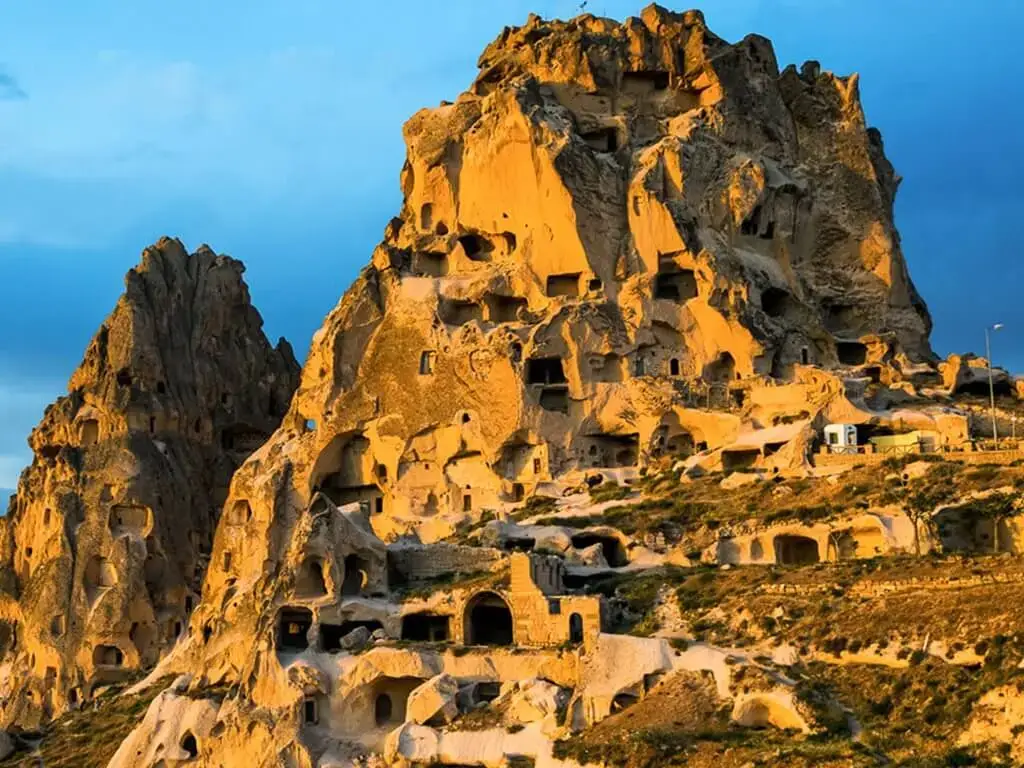When it comes to the history of Cappadocia, many people tend to focus on unrealistic fictions based on clichés or legends. However, Cappadocia is more than a glorious mythology, it is a marvel of science and nature. How so?
The history of Cappadocia, even in its brief form, is a region dating back 60 million years. The combination of the lava and ashes of Erciyes, Hasandağı and Göllüdağ has been shaped by the touch of rain and wind over time, creating today’s unique and fascinating landscape.
Beyond all these, it is known to be mentioned in ancient works and Persian sources in the 6th century BC. However, of course, the sources are not limited to these, but it can be a complicated process to deal with all the sources from beginning to end. For this very reason, in this article we have compiled for you; We have included both short and detailed sections on the history of Cappadocia from the perspective of a curious visitor.
For all this and more, why don’t you take a look at the rest of the article?
Let’s get started!
Iconic Formations of Cappadocia: Fairy Chimneys
We all know that the formation of fairy chimneys is based on a geological process, but this sentence is not enough to convey the whole story. Because the story of the fairy chimneys that form the basis of Cappadocia begins with the coming together of lava and ashes erupting from the volcanoes around the region:
Erciyes, Hasandağı and Göllüdağ, which we mentioned above, created an environment enriched with this lava and ash. Later, the layer formed by the combination of erupted lava and ash hardened over time and formed the basis for the soft layers. But these layers are still not durable and are very vulnerable to erosion. Nevertheless, the soft layers have been eroded by millions of years of rain and wind. In this process, the actual erosion that would shape the fairy chimneys began. Finally, the erosion resulted in the unique rock formations known as fairy chimneys.
Nevertheless, you should know that the beginning of the story is still not the whole story and you should take a look at the ancient period for the history of Cappadocia. But wait, let us make that easy for you too. Why don’t you take a look at the title below?
Antiquity and Cappadocia
It is possible to study the history of ancient Cappadocia over and over again according to its many centuries and civilizations. Because this part of Central Anatolia has a culturally indelible and highly influential past. Nevertheless, we can mention a few sub-headings that can help you while Cappadocia is shown among the historical places. These are
1. Hittite Period (2000 – 1200 BC):
The history of ancient Cappadocia dates back to 2000 BC. During this period, the region was part of the Hittite Empire. Realizing the strategic importance of Cappadocia, the Hittites settled here and united the region under their culture and rule.
2. Phrygia and Persian Dominance (1200-334 BC):
With the collapse of the Hittite Empire, Cappadocia came under the influence of the Phrygian Kingdom. Later, the Persian Empire conquered the region and took Cappadocia under Persian rule.
3. Alexander the Great and the Hellenistic Period (334-63 BC):
Alexander the Great conquered the Persian Empire and brought Cappadocia under the influence of Hellenistic culture. During this period, the cities in the region experienced a great cultural and economic development.
4. Roman Empire Period (63 BC – 330 AC):
The Roman Empire conquered Cappadocia in 63 BC and made the region a province of the Roman Empire. During this period, Cappadocia also became a place where Christianity began to spread.
Early Christianity in Cappadocia
Early Christianity began to spread in Cappadocia towards the end of the 1st century AD. During this period, Christian missionaries such as St. Paul and St. Barnabas came to the region to spread Christianity. Cappadocia’s unique geography thus provided the perfect refuge for early Christianity. Because churches carved into the rocks were one of the most important structures of this period, and Christians of the period often resorted to these rocks in order to express their beliefs freely and to worship.
On the other hand, the Early Christian period in Cappadocia coincided with a period of increased persecution of Christians in the Roman Empire. In these harsh conditions, the natural caves and fairy chimneys of Cappadocia once again served as a refuge for Christian communities. In these special places, secret communities practiced their worship and kept the Christian faith alive.
The most unique Cappadocia historical monuments are the underground cities built during this period. These cities provided Christian communities with protection from persecution and a place to worship. The rock-cut cities offered a practical solution to the harsh conditions in which Christian communities lived.
Finally, one of the most important contributions of the Early Christian Period to the history of Cappadocia is the famous thinkers and theologians of the period. In fact, St. Basileios, St. Gregorius and St. Gregorius Nissili, known as the famous Cappadocian Three, made significant contributions to the development of Christian theology. The works they wrote and the theological principles they established left a lasting impact on the Christian world. Some of these works are still on display in Cappadocia and other regions.
Cappadocia in the Ottoman Period
The Seljuk and Ottoman periods stand out as important milestones in the history of Cappadocia. We can briefly summarize the story of this glorious journey under 2 different headings:
1. Seljuk Period (1071 – 1308):
Cappadocia came under the rule of the Seljuk Turks after the Battle of Malazgirt. During this period, Cappadocia stood out with its architectural works and cultural interactions. Churches, monasteries and underground cities carved into the rocks were built during this time. The influence of Seljuk architecture shaped the texture of the region.
2. Ottoman Period (1308 – 1923):
After the Seljuk Empire, Cappadocia came under the control of the Ottoman Empire. During this period, the region developed further under Ottoman culture and rule. Realizing the strategic importance of Cappadocia, the Ottomans strengthened the settlements in the region and took control of the trade routes.
Cappadocia’s Modern History and UNESCO World Heritage
When we look at the modern history of Cappadocia, we see that the region became a part of Turkey in 1923 with the establishment of the republic by Turkey’s founder Mustafa Kemal Atatürk. During this period, Cappadocia’s modernization process accelerated and infrastructure investments were made in the region. Basic services such as transportation, health and education were improved, making Cappadocia more accessible to local and foreign visitors.
Included on the UNESCO World Heritage List in 1985, Cappadocia is considered a unique place with its cultural and natural values. Churches, monasteries and other structures in the region show that Cappadocia played an important role in the history of Christianity. Cappadocia’s churches and monasteries built by early Christian communities are famous for their frescoes.
Cappadocia’s UNESCO World Heritage status emphasizes that the region is a heritage that must be protected and passed on to future generations. Therefore, local and national authorities have taken various measures to protect the natural and historical richness of the region. Tourism activities, archaeological excavations and restoration work aim to sustainably manage the region and increase its tourism potential.


